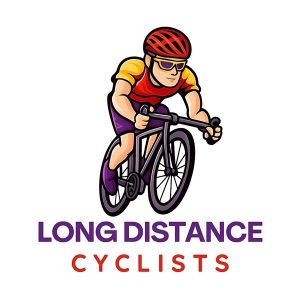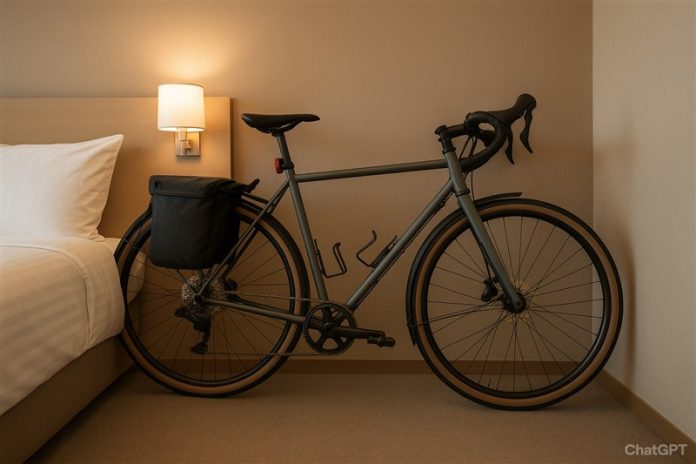Credit card touring is one of the most enjoyable and accessible ways to experience long distance cycling. Unlike traditional bike touring, where riders carry tents, stoves, and heavy panniers, credit-card touring involves travelling light, staying in hotels or guesthouses, and eating in restaurants or cafés along the way. The result is a faster, less cumbersome style of cycling that prioritises comfort, convenience, and adventure.
For many cyclists, this approach strikes the perfect balance between exploration and practicality. But what exactly does credit-card touring involve, and how do you prepare for it?
Understanding Credit-Card Touring
At its core, credit-card touring is about minimising gear while maximising flexibility. Instead of packing everything for self-sufficiency, riders rely on modern infrastructure: booked accommodation, restaurants, and bike shops along their route. With less weight on the bike, cyclists can cover greater distances each day and still end their ride with a hot shower, a meal, and a comfortable bed.
This style is especially popular in regions where accommodation and services are plentiful, such as Europe, North America, or Japan. It allows riders to enjoy the freedom of the road without the logistical demands of carrying camping gear.
Benefits of Credit-Card Touring
1. Lighter Loads, Faster Riding
Without panniers full of cooking and camping equipment, the bike is significantly lighter. Riders can climb more easily, travel longer distances, and handle the bike with greater agility.
2. More Comfort
The appeal of finishing a ride with a comfortable bed, shower, and restaurant meal cannot be overstated. This makes the experience more enjoyable for many cyclists compared to sleeping in a tent after a long day.
3. Easier Logistics
There’s no need to search for wild camping spots or carry food supplies. A smartphone and a credit card are often all that’s required to secure meals and lodging along the route.
4. Increased Safety
Staying in hotels or guesthouses often means being closer to towns or villages. This provides better access to healthcare, bike repair, and support in case of emergencies.
Drawbacks to Consider
While credit-card touring offers many advantages, there are a few considerations:
- Costs: Accommodation and meals add up quickly compared to camping and self-catering.
- Route Limitations: The approach works best in areas with frequent accommodation options. Remote regions may still require carrying camping gear.
- Less Flexibility: Booking hotels in advance reduces spontaneity, although apps like Booking.com or Airbnb can help manage this on the go.
Accommodation Options for Credit-Card Touring
A major factor in planning a credit-card tour is deciding where you’ll stay each night. Options range from budget-friendly hostels to boutique hotels, depending on your preferences and budget.
| Type of Accommodation | Features | Best For |
|---|---|---|
| Hostels | Shared or private rooms, often bike-friendly | Budget-conscious riders, solo cyclists |
| Guesthouses / B&Bs | Homely feel, often with breakfast included | Couples, riders wanting local flavour |
| Hotels | Wide range of comfort levels, from budget to luxury | Cyclists seeking comfort and privacy |
| Airbnb / Rentals | Flexible stays, kitchens for self-catering | Groups, longer stopovers |
| Boutique Hotels | High-end amenities, unique design | Riders who want a touch of luxury |
The Best Bike for Credit-Card Touring
The ideal bike for this style of touring is light, reliable, and versatile enough to handle both paved roads and occasional dirt tracks. Here are the main factors to consider:
Frame Material
- Aluminium: Lightweight, affordable, and widely available.
- Steel: Comfortable and durable, though heavier than aluminium. Good for long days in the saddle.
- Carbon Fibre: Very light and stiff, ideal for fast riding, but less forgiving and often more expensive.
Gearing
Low gearing is essential for climbing hills or mountains with ease. A compact road crankset (50/34) paired with a wide-range cassette (11–34 or even 11–36) is often the best option for riders tackling mixed terrain.
Wheel Size & Tyres
- 700c wheels are standard and roll efficiently on paved roads.
- Tyre width between 28–35mm provides comfort and grip while remaining fast.
- If more gravel or unpaved roads are expected, 38–40mm tyres add stability and control.
Bike Types Suited for Credit-Card Touring
- Endurance Road Bikes: Lightweight, designed for long days, ideal for smooth roads.
- Gravel Bikes: Versatile, capable of handling mixed terrain while still efficient on tarmac.
- Audax / Randonneur Bikes: Specifically built for long-distance comfort with multiple mounting options.
Essential Gear for Credit-Card Touring
Even though you’re travelling light, some gear is essential:
- Lightweight Bike Bags (frame bag, saddle bag, top tube bag)
- Cycling Kit & Casual Clothes (enough for 2–3 days, washing as you go)
- Spare Tubes, Multitool, Pump
- Chargers & Power Bank
- Navigation Device / Smartphone
- Light Rain Jacket & Warm Layer
- Credit Card, Cash & ID
Packing efficiently is key. Aim for only the essentials while keeping weight to a minimum.
Planning a Credit-Card Touring Route
When creating your itinerary, consider the following:
- Daily Distance: Many credit-card tourists ride 80–150km per day, depending on terrain and fitness.
- Accommodation Availability: Check towns and villages at intervals along your route to ensure options.
- Cycling Infrastructure: Countries like France, Germany, and the Netherlands have excellent cycle paths and services.
- Backup Plan: Always have a “short day” option in case of weather or fatigue.
Who is Credit-Card Touring Best For?
This style of cycling suits riders who:
- Prefer lighter, faster rides over carrying heavy panniers
- Value comfort at the end of a long ride
- Are willing to spend more for hotels and meals
- Want to focus on the ride itself rather than survival logistics
Conclusion
Credit-card touring is an ideal option for cyclists who want to explore the world on two wheels without the burden of carrying camping equipment. With the right bike, thoughtful route planning, and an understanding of available accommodation, this approach offers freedom, efficiency, and comfort.
While it requires a larger budget than traditional touring, the trade-off is a more streamlined, enjoyable experience that appeals to riders who value both adventure and convenience. For many, it represents the perfect blend of cycling challenge and modern-day comfort.
















